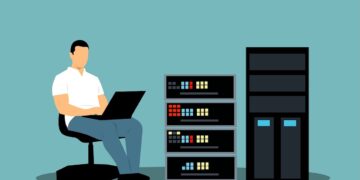Malware and ransomware are extremely dangerous threats to the ongoing digital world; businesses, institutions, Govt organizations, and individuals are at risk from attacks. Usually, banking, financial, utilities, Govt websites, and high-end profiles are considered primary targets of cybercriminals, but no one knows who is on target with what purpose, it is unpredictable. In 2021, 66% of healthcare institutions were attacked by ransomware
How dangerous are the malware and Ransomware
Malware hinders the functioning and operations of the system by taking partial or full control over it. These programs impose risks to the data, network, and operations. Malware does not harm the hardware equipment of the system. However, it can encrypt, steal, delete, hijack or alter the main functions of the computer. Moreover, it can spy on your activities even without your permission or knowledge. Each year businesses have to deal with new types of malware variants. According to the stats number of detected malware variants was around 28.84 million 10 years ago. Now, this count has reach 678 million by 2020.
Ransomware is also a type of malware that blocks the user’s access to the system. Unless the user pays the ransomware creator, the problem keeps on persisting. It is much more dangerous than regular malware. The attacker spreads this malware through phishing emails that have infected attachments. Over the last few years, one can see a steep rise in ransomware. It attacks both the individual system and organizational systems.
Several organizations have been hit by malware attacks this year. In January 2022, Kronos, Puma’s workforce management solution provider, faced a ransomware attack. Similar malware and ransomware attacks were held on Indian airlines SpiceJet, Toyota, Nvidia, Costa Rica Government, and Bernalillo County, New Mexico.
Rise of the malware and Ransomware attacks
Due to the COVID-19 outbreak, the world shifted its course of action overnight to remote work culture. The ransomware attack spiked 150% over 2021. The worst part is the amount victims paid due to this attack increased by more than 300%, Forbes stated.
Various news related to ransomware attacks can be found in daily columns. For instance, it was seen that a single compromised password would immediately attack the person by demanding ransom in exchange.
But today, the runs and attacks became frequent and sophisticated. Various well-organized criminal organizations deploy malware. It hacks out the sensitive information of the organization and attacks the same. Attackers steal the data before encrypting it. Therefore, if the victim refuses to pay the amount, the attackers would threaten to leak their data publicly or misuse it.
The attackers present on the dark web demand a ransom amount in the form of cryptocurrency. But according to NPR, until the last couple of years, the attack of ransomware and malware occurred on a small scale.
Ways to mitigate malware and ransomware.
You can defend your system from malware and ransomware attacks in different ways. Some of these techniques include:
1. You must keep your software and system updated. In addition to that, the computer software must be kept up to date with the current and latest version. Using the new version will offer the best security to prevent the system from malware attacks.
2. Make sure you use a non-administrator account whenever it is possible. Most of the systems would allow the user to create multiple user accounts. In this process, different users would have different settings. Hence, the system would experience different security settings in these user accounts. Doing this would prevent the system from malware.
3. One must be cautious before opening or clicking any unknown link or downloading anything from random websites. It might be tempting. But your temptations may put you into a lot of trouble. Downloads are the prime ways to install malware attacks. Hence you must pay attention to what you are downloading and from where you are downloading.
4. Injecting malware via emails is commonly used by cybercriminals; email service providers constantly warn their users to be cautious while opening the email or downloading attachments; it may contain malicious harmful software. One should check the mail sender name, domain name, label, etc to ensure that you have recognized the email. Before downloading the attachments, one must try to see the extension of the attached file. If anything suspicious you observed, do not download the attachment- immediately report suspicious emails as spam mail and unsubscribe.
5. While surfing the internet, you might encounter various websites with pop-up windows. Some of these pop-ups can be tempting. If you fall into the trap of these pop-ups, it will be difficult for you to protect yourself. Ensure you avoid these pop-ups and close the proper window inside the pop-up Windows.
6. Some sites and applications help due to sharing files with different uses. These applications and websites offer little protection against different malware. Sometimes this malware can be disguised in the form of popular programs, albums, games, and movies.
7. Regular employee training and awareness of Cybersecurity also help organizations tackle security challenges. One must use antivirus software to minimize the risk of malware and ransomware attacks.
Also Raed: The Dawn of a New (Ransomware) Age























